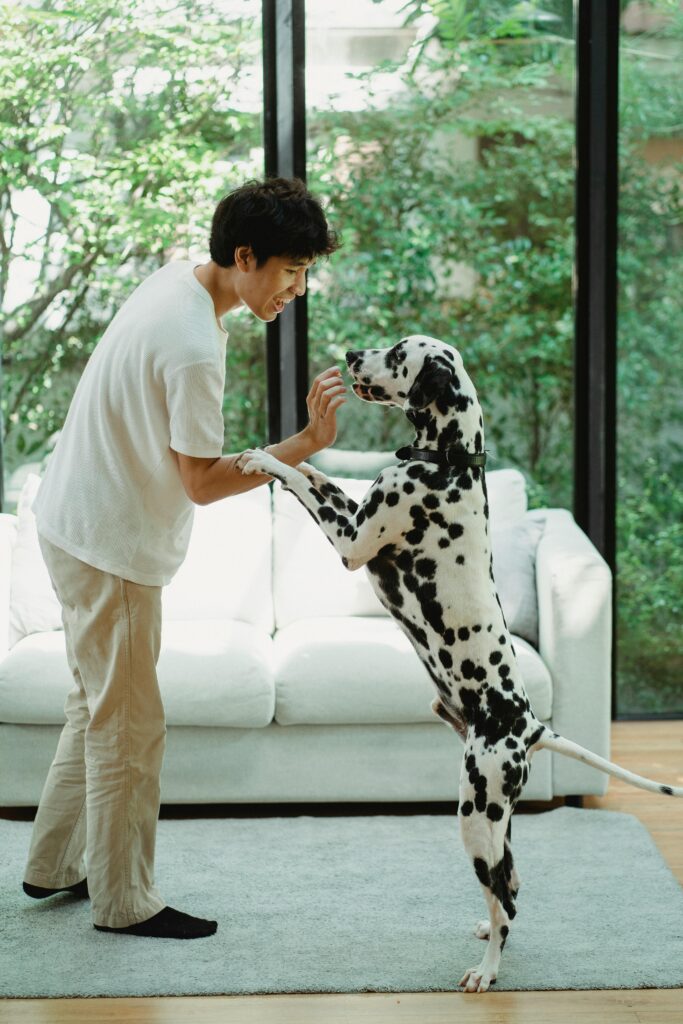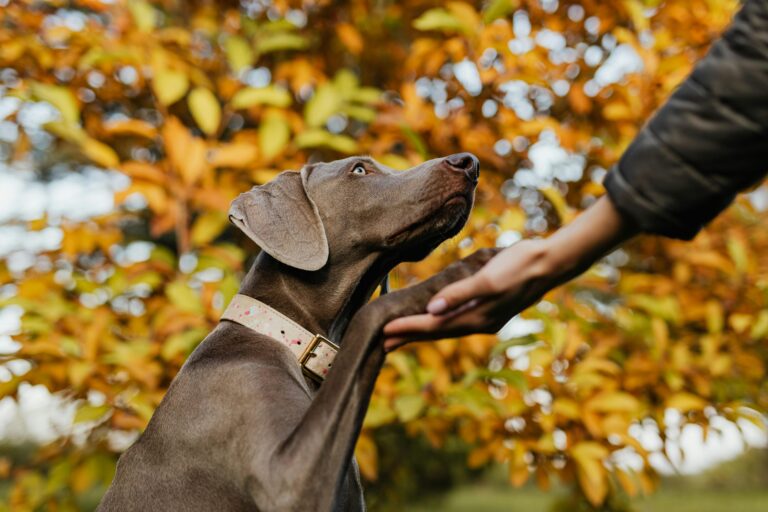Obedience training is not just for puppies. Whether your dog is eight weeks old or eight years old, training plays a critical role in shaping their behavior, confidence, and bond with your family. Every stage of life brings unique opportunities and challenges, but with the right approach, your dog can thrive from puppyhood through their senior years.
As a professional trainer in Springfield, I have guided countless families through these stages. This guide will walk you through what to expect, how to train, and why obedience should be a lifelong investment.

Puppyhood (8 weeks – 6 months): Building Foundations
The puppy stage is all about exposure, bonding, and structure. This is the time to start shaping habits before bad ones set in.
Key training priorities:
- House training: Establish a potty routine early
- Crate training: Teach independence and structure
- Basic commands: Sit, down, come, place
- Socialization: Safe exposure to people, sounds, and surfaces
- Bite inhibition: Redirect nipping to toys
Short sessions work best with puppies. Use high-value treats, lots of praise, and keep sessions fun.
Adolescence (6 months – 2 years): The Testing Phase
Adolescent dogs often challenge boundaries. Hormones and growing independence can make this stage difficult without structure.
Key training priorities:
- Impulse control: Prevent jumping, mouthing, or darting out doors
- Loose leash walking: Reinforce calm walking before bad habits set in
- Distraction training: Practice commands around people, other dogs, and new environments
- Recall: Build reliability outdoors with long lines
This stage is where consistency matters most. Our blog on common leash walking mistakes and how to fix them is a great resource if pulling is becoming a battle.
Adulthood (2 – 6 years): Reinforcing Reliability
Adult dogs are often calmer, but they still need regular training to maintain good habits. This stage is about building reliability and versatility.
Key training priorities:
- Advanced obedience: Heel, extended down, and distance commands
- Public manners: Café patios, parks, and busy sidewalks
- Problem-solving: Addressing behaviors like counter-surfing or selective listening
- Physical conditioning: Training integrated with exercise and play
This is the stage where your dog can enjoy the most freedom, if they are consistent with obedience.
Middle Age (6 – 9 years): Keeping Skills Sharp
At this point, your dog knows the basics, but skills may fade if they are not reinforced. Training helps keep their mind active and sharp.
Key training priorities:
- Regular refreshers: Short obedience sessions to maintain commands
- Controlled play: Structured games that prevent overexcitement
- Household manners: Reinforce rules with guests or children
- Confidence building: Continued exposure to new experiences
Our Basic & Advanced Obedience Program ensures that even middle-aged dogs stay reliable, responsive, and engaged.
Senior Years (9+ years): Adapting Training to Needs
Senior dogs may slow down physically, but they still benefit greatly from training. Adapt your sessions to their health and energy level.
Key training priorities:
- Gentle commands: Sit, stay, and down with patience for slower responses
- Low-impact mental stimulation: Puzzle feeders, scent work, and calm obedience games
- Comfort with vet handling: Cooperative care for medical visits
- Confidence in new routines: Adapting to changes in mobility or environment
Even older dogs love having a job. Training keeps them engaged and prevents cognitive decline.
For more insight into how training adapts to your dog’s environment, the AKC outlines important urban dog skills that remain valuable at every stage of life.
The Role of Consistency Across All Stages
No matter your dog’s age, consistency is the thread that ties training together. A few minutes a day keeps commands sharp and prevents regression. Dogs thrive when they know what to expect, and obedience gives them that structure.
Practical ways to stay consistent:
- Use training commands before meals
- Reinforce “sit” and “stay” during daily routines
- Practice recall in safe, fenced areas
- Keep walks structured with clear leash expectations
Final Thoughts: Training Is a Lifelong Journey
Training is not something you finish. It evolves as your dog grows, and it enriches their life at every stage. From the curious puppy to the seasoned senior, obedience provides structure, safety, and a stronger bond with you.
At Off Leash K9 Training Springfield, we tailor programs to meet your dog where they are, ensuring success no matter the age or stage.
Ready to invest in your dog’s obedience for life? Contact us today and let’s create a training plan that grows with your pup.

